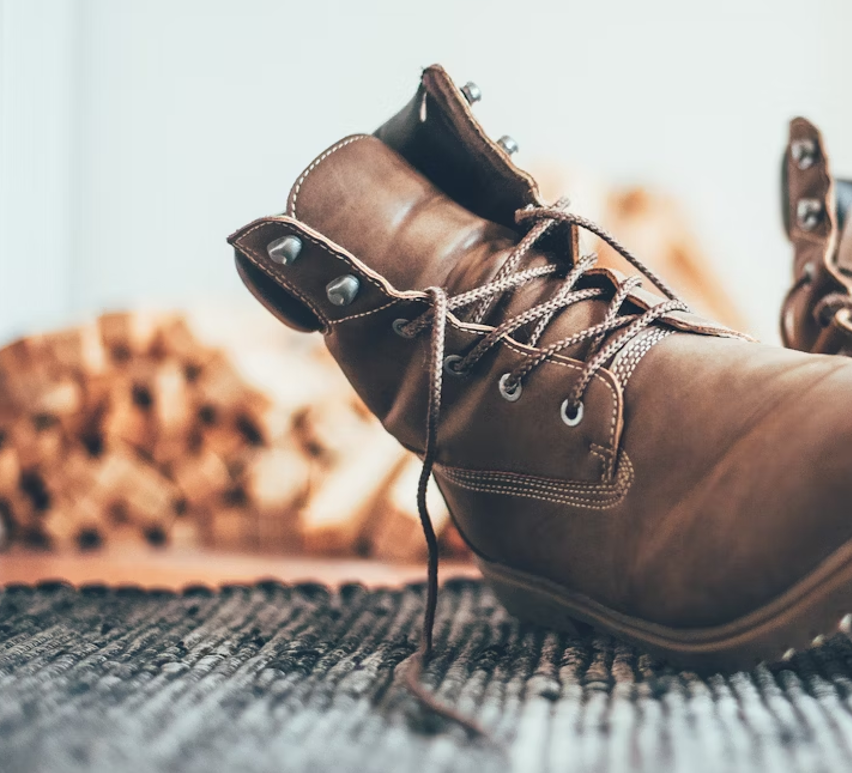Selecting the right boot size is crucial for ensuring comfort and support, especially when dealing with larger men’s sizes like size 15 and size 16. Properly fitted footwear can prevent a range of foot issues, from blisters to more severe conditions such as chronic foot pain. As noted by Harvard Health, a well-fitting shoe is key to maintaining overall foot health.
When comparing size 15 boots to size 16 boots, it’s important to understand how these sizes fit relative to one another and nearby sizes such as size 14. Choosing a shoe that is either too small or too large can result in discomfort and long-term foot problems. Understanding the subtle differences between these sizes can help in making an informed decision, enhancing your comfort, and overall footwear experience.

Understanding the Fit: Size 15 Mens Boots vs. Size 16 Mens Boots
The fit of mens boots is influenced by several factors including foot shape and the shoe’s design. For instance, the different lengths and widths between size 15 and size 16 boots can significantly affect usability and comfort:
- Size Differential: A mere half-inch can make a big difference in toe space and foot stability.
- Foot Health Impact: A proper fit reduces the risk of developing conditions like bunions or corns. Referencing guidelines from the American Podiatric Medical Association for understanding the importance of a good fit can be helpful.
- Choosing the Right Size:
- Measure both feet as they might slightly differ.
- Wear the type of socks you plan to use regularly with your boots.
- Shop for boots later in the day when feet are slightly swollen to ensure the fit accommodates foot size throughout the day.
In some cases, consulting a shoe specialist can provide personalized advice on sizing, ensuring you choose between size 15 and size 16 according to your specific needs. Remember that brands also vary in fit—trying different brands may help you find the most comfortable option.
Understanding Variations in Fit and Style
When considering size 14 boots up to size 16, it’s essential to acknowledge the differences in fit and style. Here’s what to consider:
- Fit:
- Larger sizes may feel roomier; thus, matching foot shape with boot design is crucial.
- Even slight size increases affect toe space and overall foot support.
- Style:
- Certain styles might run larger or smaller, so compare measurements, not just standard sizes.
Key Considerations
When selecting a size, think about these factors:
- Foot Shape: A wider foot might fit better in a larger size.
- Activity Involvement: Choose a boot style that matches your specific activities. Hiking boots, for example, need a snug fit around the heel and ankle for support.
Size 14 Boots Mens: Finding the Right Fit
Finding the right mens size 14 boots can come with its unique challenges. However, there are practical solutions to make the search easier.
Overcoming Search Challenges
- Limited Availability: Not all brands consistently carry size 14, making it trickier to find a match.
- Online Resources: Use online platforms to expand options and read specific user reviews.
Practical Solutions
To enhance the chances of finding the right fit, consider these tips:
- Brands and Styles: Some brands cater specifically to size 14. Research to find favorites and check for availability.
- Customer Feedback: Look into Consumer Reviews for user experiences on fit and comfort.
Brands That Cater to Size 14
- Skechers
- Timberland
- Dr. Martens
Each offers a variety of styles, from casual to work-oriented boots. By exploring these brands, finding a comfortable and stylish boot is more manageable.
Mens Boots Size 14: Benefits and Considerations
When it comes to finding the right fit in footwear, men’s size 14 boots offer unique benefits that cater to specific needs. Whether you’re looking for comfort, availability, or style, these considerations can help guide your decision-making process:
- Availability: While size 14 boots are less common, many brands recognize the demand and offer a variety of options in this size.
- Style Options: Popular styles such as hiking boots, casual footwear, and work boots are often available in size 14. This variety ensures you can find a boot to match your personal style and practical needs.
- Cost Considerations: Sometimes, larger sizes can come with a premium price. It’s important to shop around and compare brands to find the best deals without sacrificing quality.
- Durability and Support: Larger boots often incorporate durable materials and enhanced support features to accommodate bigger frames, benefiting those who need extra stability.
For more insights on current boot styles and industry trends, check out Glamour’s article.
Factors to Consider When Choosing Between Size 15 and Size 16 Boots
Deciding between size 15 boots and size 16 boots can be challenging. Here are some factors to consider that might help make the decision easier:
- Foot Shape: The shape of your foot can affect how each size feels. If a size 15 feels too snug, a size 16 might offer a better fit.
- Brand Variation: Not all brands size their boots the same way. One brand’s size 15 might fit like another’s size 16. Trying on boots from different manufacturers can be helpful.
- Activity Level: Your intended use for the boots can influence size choice. For instance, if you plan to wear thick socks or carry heavy loads, opting for a slightly larger boot might be more comfortable.
- Return Policies: Choose retailers with flexible return policies, making it easier to try different sizes and discover what fits best without any hassle.
By weighing these factors, you can find the right fit that ensures comfort and enhances your daily activities.
Making a Choice: What’s Best for You?
Choosing the right boot size is about finding what works best for your feet. Both size 15 and size 16 boots offer unique fits, and understanding your specific needs can help guide this decision. Here’s how to find the best choice for you:
- Try on Different Sizes: Sizes can vary by brand. Always try both sizes to see which offers the most comfort.
- Consult with Retailers: Staff in shoe stores can provide valuable insights on sizing and fit. Don’t hesitate to ask for their advice.
- Experiment with Styles: Different styles may fit differently, even if they’re labeled the same size. Try various styles such as hiking, work, and casual boots.
- Consider Foot Health: Check out studies and advice from organizations like the American Podiatric Medical Association for tips on maintaining foot health, which can help you select the right fit.
Enhance Your Boot Shopping Experience
To ensure a satisfying shopping journey and find the perfect fit:
- Explore Diverse Sizes and Styles: It’s essential to explore multiple brands and styles to find what suits you.
- Visit Stores with Good Return Policies: This can allow you to try on multiple sizes without pressure, giving you the flexibility to return what doesn’t fit.
- Prioritize Confidence and Comfort: Ultimately, your comfort should be the top priority. A well-fitting boot supports not just your feet but your overall well-being as well.
By following these steps, you’re more likely to find a boot that not only fits well but also feels great. Remember, the right size can make a world of difference in comfort and support.






